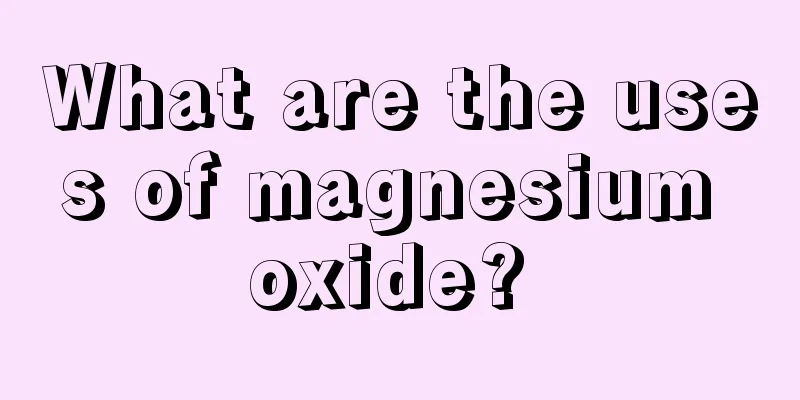What are the uses of magnesium oxide?

|
In chemistry, magnesium oxide is an oxide of magnesium. Under normal conditions, it looks like a white solid. It can actually be found in nature, but most of the time it is in the form of periclase. It is not difficult to find that many medicines contain this ingredient, so what are the uses of magnesium oxide? In addition to being used in medicine, it has many other functions! Application Areas The domestic annual output of magnesium oxide is about 12 million tons. It is used to determine sulfur and pyrite in coal and sulfur and arsenic in steel. Used as a standard for white pigments. Light magnesium oxide is mainly used as raw material for preparing ceramics, enamel, refractory crucibles and refractory bricks. It is also used as a polishing agent, adhesive, coating, and filler for paper, and an accelerator and activator for chloroprene rubber and fluororubber. After mixing with solutions such as magnesium chloride, it can be made into magnesium oxide water. It is used as an antacid and laxative in medicine, and is used to treat gastric acid and duodenal ulcers. It is used as a catalyst and raw material for the manufacture of magnesium salts in the chemical industry. It is also used in the manufacture of glass, dyes, phenolic plastics, etc. Heavy magnesium oxide is used for firing grinding and half rollers in rice milling industry. In the construction industry, it is used to make artificial chemical floors, artificial marble heat-proof boards, and sound-proof boards. In the plastics industry, it is used as filler. It can also be used to produce other magnesium salts. One of the main uses of magnesium oxide is as a flame retardant. Traditional flame retardant materials widely use flame retardant mixtures composed of halogen-containing polymers or halogen-containing flame retardants. However, once a fire occurs, a large amount of smoke and toxic and corrosive gases will be produced due to thermal decomposition and combustion, which will hinder firefighting and personnel evacuation and corrode instruments and equipment. In particular, people have found that more than 80% of deaths in fires are caused by thick smoke and toxic gases produced by materials. Therefore, in addition to flame retardant efficiency, low smoke and low toxicity are also essential indicators of flame retardants. The development of China's flame retardant industry is extremely unbalanced, with chlorinated flame retardants accounting for a large proportion and ranking first among all flame retardants, among which chlorinated paraffin occupies a monopoly position. However, chlorine-based flame retardants release toxic gases when they work, which is far from the non-toxic and high efficiency pursued in modern life. Therefore, in order to comply with the world's development trend of flame retardants with low smoke, low toxicity and no pollution, the development, production and application of magnesium oxide flame retardants are imperative. |
<<: What is calcium sulfate used for?
>>: What is Ammonium Chloride used for?
Recommend
Which foods have the effect of preventing liver cancer? Eating more of these foods is beneficial to preventing liver cancer
The fruit raspberry can significantly inhibit the...
Auxiliary examination methods for nasopharyngeal carcinoma
Nasopharyngeal carcinoma refers to a malignant tu...
Three stages of the coagulation process
Coagulation refers to the process in which blood ...
Can photochromic glasses protect against ultraviolet rays?
Many people know about photochromic glasses, whic...
How much does it cost to treat breast cancer
How much does it cost to treat breast cancer? 1. ...
Four typical symptoms of breast cancer
Breast cancer is a disease that women often suffe...
How are ovarian tumors classified
How are ovarian tumors classified? Ovarian tumors...
What to do if you are born with bad hair quality
Many structures of our body are divided into natu...
What are the uses of pine pollen?
When talking about pine trees, people will think ...
Blisters suddenly appeared on my feet
If blisters appear on the feet, it is generally c...
The relationship between normal gallbladder size and health
Many people want to know about the normal size of...
What are the clinical manifestations of cardiovascular neurosis
Cardiac neurosis is a syndrome centered around so...
Apply honey on face to remove acne
For people who often get acne on their faces, rem...
Will lymph follicles disappear on their own?
Lymph nodes exist in the form of liquid in our bo...
Acupuncture for stomach problems
Gastric disease is a very common disease in our l...









